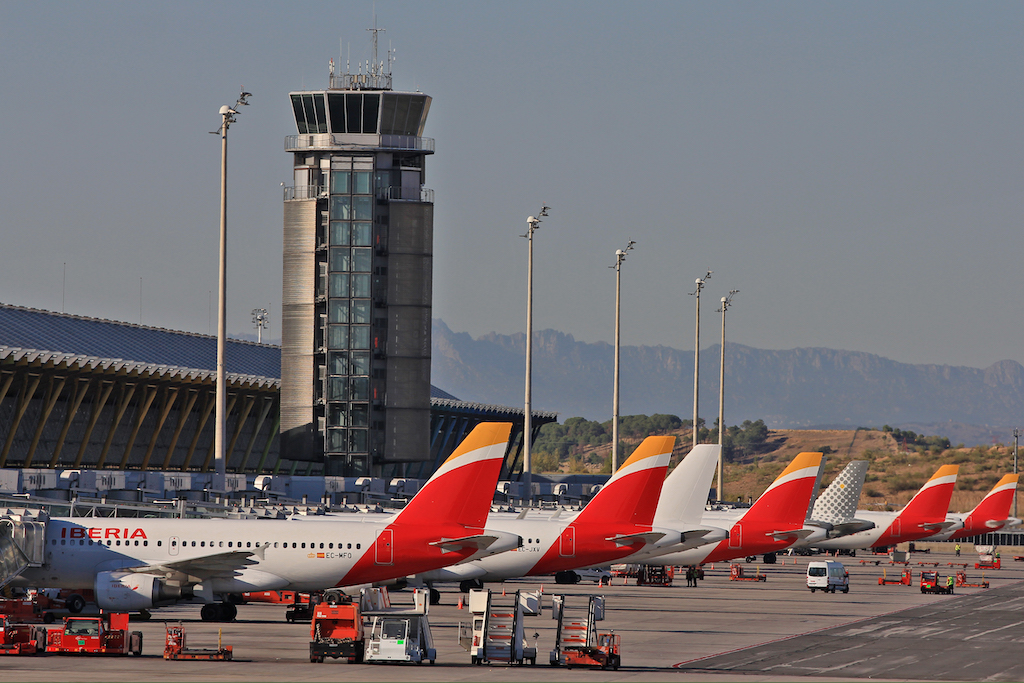IAG Sees Hope in Spain as Iberia, Vueling Roar Back

Photo Credit: Iberia and Vueling are leading the recovery at IAG. Flickr / vic_206
Bookings for UK travel from the U.S. almost doubled in a single afternoon, on July 28, when the UK waived quarantine requirements for U.S. visitors who are fully vaccinated or could present a negative Covid-19 test. The spike surprised even IAG executives, who took it as an augury for the demand they could see when travel restrictions ease more widely.
In fact, IAG only has to look internally to see how demand for European vacations recovers once travel restrictions lift. Spain eased many of its barriers in May, and sales from the U.S. have boomed. Domestic demand in Spain is almost back to pre-crisis levels, and both Iberia and Vueling were the most successful airlines in the IAG group in the first half of the year. Iberia Express reported an operating profit, IAG CEO Luis Gallego said, although the discount unit's figures are counted in Iberia's overall results.
Both Iberia and Vueling retooled their networks to capture more Spanish domestic demand. Both have dropped some longhaul routes to Latin America and are redeploying aircraft on leisure routes in the Iberian Peninsula and the Balearic Islands, Gallego said. During the second quarter, Iberia operated 44 percent of its pre-crisis capacity, while Vueling operated 72 percent. Vueling's domestic Spanish capacity is actually larger than it was in 2019, he added.
The tale at IAG's other airlines was decidedly less positive, however. British Airways had seen an uptick in demand for visiting friends and relatives (VFR) flights to India and Pakistan earlier this year, but that demand dwindled after those countries were added to the UK's "red" list in the wake of severe Covid-19 outbreaks. The carrier's network has been restructured to capture more transatlantic traffic to Europe connecting through London, versus British Airways' traditional focus on point-to-point longhaul flights.
During much of the first half, British Airways operated passenger flights to the U.S. and mainly cargo-only flights across the rest of its longhaul network. With the UK reopening to U.S. visitors, however, the carrier is adding dozens of frequencies to its transatlantic network, raising London-New York to thrice daily and Los Angeles to 10 flights per week, for example.
Aer Lingus trailed the rest of the group, thanks to Ireland's travel restrictions, among the strictest in Europe. Load factors on the carrier's flights have averaged at about 20 percent. The carrier has opened a new base in Manchester for transatlantic flights and has joined the group's transatlantic joint venture with American Airlines.
IAG still has hopes for Level. The carrier has been operating cargo charters from Barcelona and eventually will return to low-cost longhaul flying, using Vueling as feed, when demand returns, Gallego said.
IAG Cargo was the star of the group in the first half of the year. The unit reported record traffic in the first half, and revenues are 49 percent higher than in 2019. Cargo operations, additionally, allow the group to keep crews current and raises utilization of aircraft, Gallego noted. Cargo traffic likely will fall through the balance of the year and into next year as "preighters" are pushed back into passenger service as travel demand rises.
Groupwide, capacity was 22 percent of 2019 levels in the first half, but this is expected to rise to 45 percent in the third quarter. IAG can flex its capacity up to 75 percent of 2019 levels by the fourth quarter, if demand warrants, because it has kept crews current and has enough aircraft on hand. The group's overall capacity is lower than it was in 2019, however, thanks to the retirements of several British Airways Boeing 747s, the entire fleet of Airbus A380s, and Iberia's Airbus A340s, Gallego said.
Business demand, however, is a fraction of what it was 5-10 percent of 2019 levels, mainly fueled by continuing government travel. Where non-government business demand exists, it's from small- and medium-sized businesses, not large corporations, Gallego said. Still, the group is encouraged by the return of business travel among its Spanish carriers and expressed confidence that demand will recover as restrictions ease.
IAG did not cancel any aircraft orders and took five aircraft in the first half and expects to take 10 aircraft in the second half. The group anticipates 20 aircraft deliveries next year.
IAG still is pressing ahead with the proposed acquisition of Spain's Air Europa. The European Commission last month said it is extending its antitrust review of the deal through December, however. Gallego said the deal would position Madrid as a "hub that can compete with the strongest hubs in Europe," and would allow the group to expand flights to Asia from Spain.
IAG lost €2 billion ($2.4 billion) in the first half, a narrower loss than the €4 billion reported last year. Revenues of €2.2 billion were down 58 percent from last year.
